Key takeaways:
- Family communication thrives in relaxed settings, fostering deeper connections and open dialogue.
- Clear communication prevents misunderstandings and builds stronger family relationships.
- Effective discussions require dedicated time, active listening, and the use of “I” statements to express feelings constructively.
- Involving everyone in brunch preparations and maintaining a light, fun atmosphere enhances family bonding and meaningful conversations.

Understanding family communication
Family communication is like a dance, where each member has a role to play. In my experience, the rhythm often shifts from cherished moments of laughter to more challenging exchanges filled with misunderstandings. Have you ever noticed how a simple conversation over dinner can uncover layers of emotion? It’s fascinating how sharing a meal often opens the door to deeper discussions.
I remember a time during a family brunch when my younger sibling shared her worries about school. That moment transformed into a heartfelt conversation, revealing that she felt overwhelmed. It made me realize that those casual settings provide a unique environment for open dialogue. It’s often in these relaxed moments that we truly connect.
I’ve found that fostering an atmosphere of patience and empathy can significantly enhance family communication. When I actively listen, I notice how my family members respond with more openness. Isn’t it amazing how just allowing someone to feel heard can change the dynamics of the conversation entirely? This awareness drives me to continuously improve my communication skills within my family.
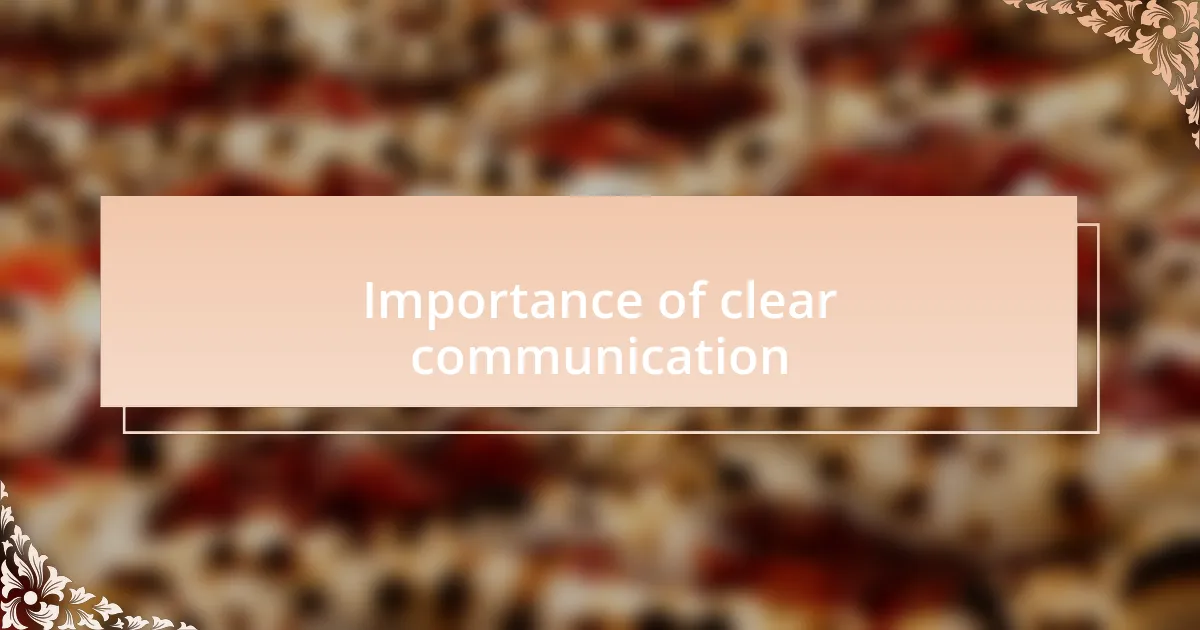
Importance of clear communication
Clear communication acts as the backbone of strong family relationships. I once had a weekend brunch where we discussed upcoming vacation plans. Initially, miscommunication led to frustration between my partner and me. However, when we took a moment to clarify our ideas and listen to one another, not only did we resolve the issues, but our excitement for the trip doubled. Have you ever experienced that pivotal moment when clarity shifts the entire tone of a conversation?
Misunderstandings can easily spiral out of control if left unaddressed. After a family gathering, I overheard my cousin feeling dismissed because of a sideways comment that went unnoticed. It struck me how something seemingly minor could linger in someone’s mind. I realized that addressing these small concerns head-on can prevent future resentment and promote a more harmonious atmosphere. Doesn’t it make you think about how much we impact those around us with our words?
I truly believe that establishing clear channels of communication can transform family dynamics. In moments of conflict, I make it a point to express my feelings honestly and encourage others to do the same. This practice has helped me build stronger connections with my family, creating an environment where we feel safe to share our thoughts and emotions. What if we all approached our family conversations with this level of openness?
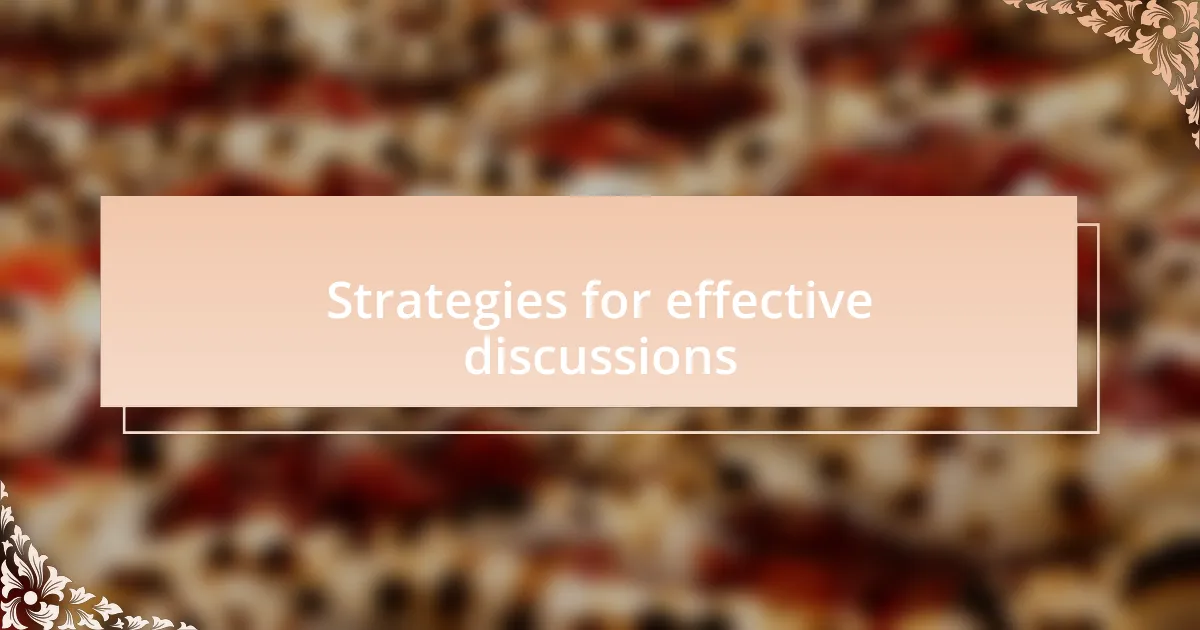
Strategies for effective discussions
When it comes to effective discussions, one strategy I find invaluable is setting aside dedicated time to talk. I remember a time when my family struggled to discuss a sensitive issue during our regular meals, often leading to awkward pauses and misunderstandings. By scheduling a specific “family chat” time, we created a safe space where everyone felt encouraged to express themselves without the pressure of interruptions. Have you ever considered how timing could change the flow of a conversation?
Another approach I’ve embraced is the art of active listening. During a recent family gathering, I made a conscious effort to listen more than I spoke. This shift not only fostered a sense of respect but also encouraged my family members to open up more. I realized that sometimes, just hearing someone out can be more powerful than offering advice. Have you ever noticed how being genuinely heard can change the way someone feels about a conversation?
Lastly, I believe in the power of using “I” statements to communicate feelings and needs. For example, instead of saying, “You never listen to me,” I might say, “I feel overlooked when my opinions aren’t acknowledged.” This subtle change often leads to less defensiveness and more productive exchanges. I learned this from a family workshop and found it transformative; it’s remarkable how language can reshape discussions. Have you tried using “I” statements in your conversations?
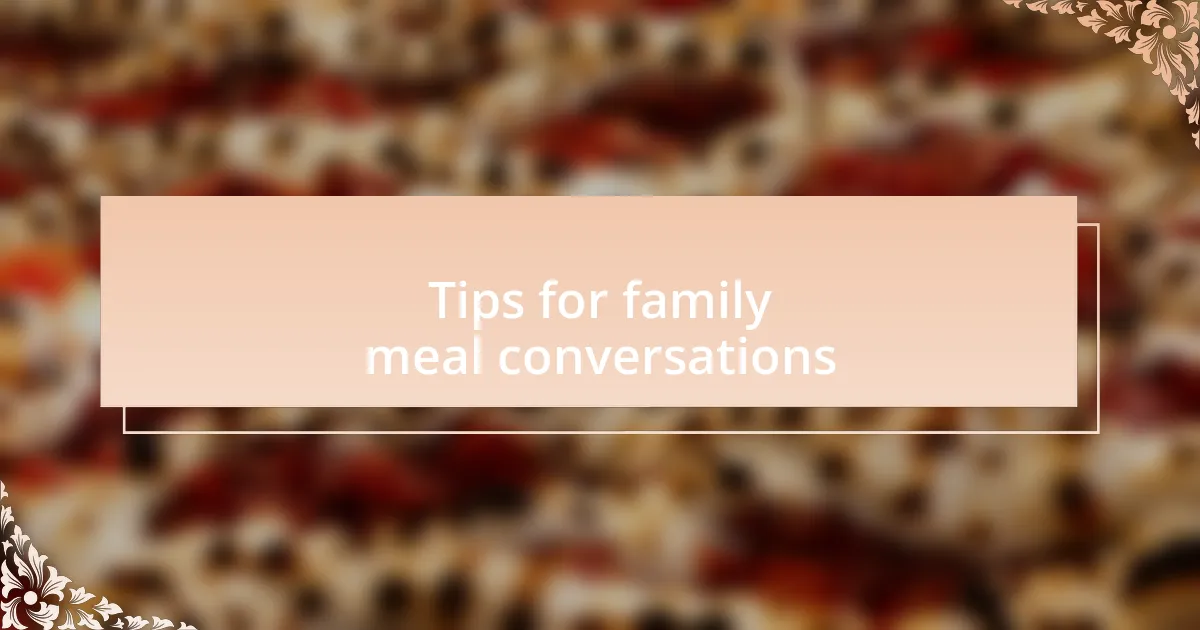
Tips for family meal conversations
One tip that has consistently enhanced our family meal conversations is incorporating open-ended questions. Instead of the usual “How was your day?” I started asking things like, “What was the most interesting part of your day?” This change sparked deeper conversations, allowing everyone to share stories and feelings instead of quick, one-word answers. Have you noticed how these types of questions can transform a mundane dialogue into a meaningful exchange?
Another technique I find effective is sharing a highlight and a lowlight from my day. This simple practice not only sets the tone for honesty but also encourages others to reflect on their experiences. I remember one dinner where I shared a challenging work moment, and my youngest shared her struggle with a group project at school. Such moments of vulnerability can foster empathy and connection among family members. How often do we miss opportunities to relate through our triumphs and struggles?
Finally, I emphasize the importance of keeping the conversation free from distractions. During meals, we try to limit phone use and turn off the TV. I can’t tell you how much richer our interactions become when we are fully present. Once, I noticed that a minor family disagreement melted away when we focused solely on each other rather than our devices. Isn’t it incredible how the absence of distractions can bring the family closer together?
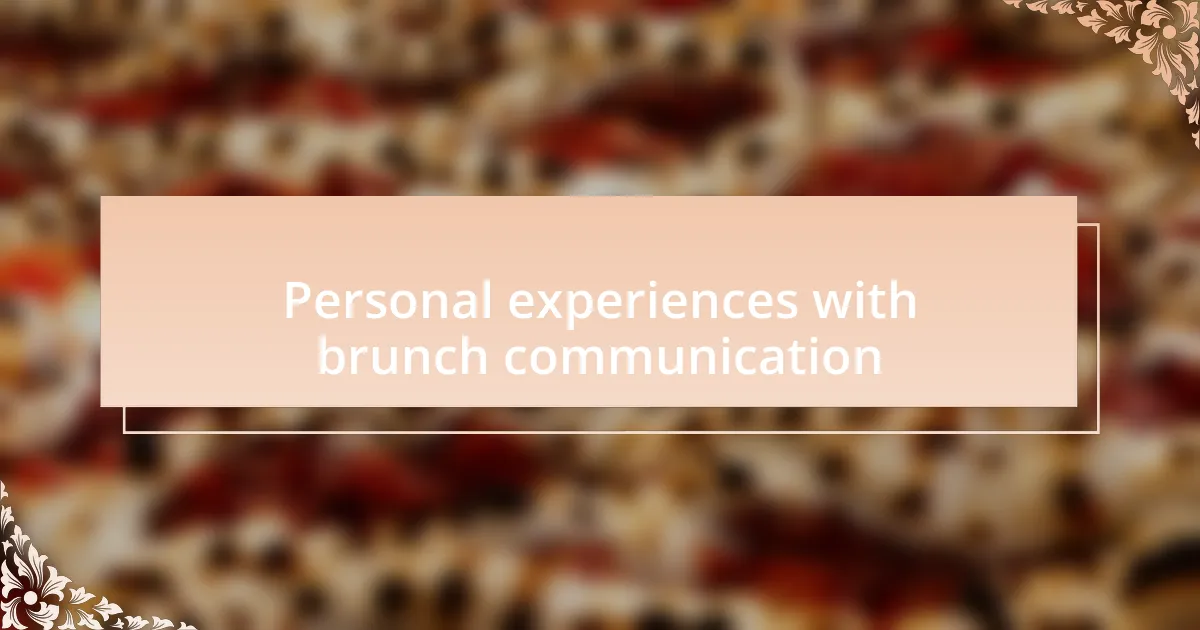
Personal experiences with brunch communication
There’s something special about sharing a brunch meal that naturally opens up the lines of communication. I recall one Sunday when we decided to host a brunch for extended family—waffles, mimosas, and lots of laughter. As we passed around the food, stories about childhood memories flowed freely. It struck me how the relaxed atmosphere of brunch, combined with delicious food, creates a safe space for heartfelt conversations.
I’ve also noticed that theme-based brunches can ignite intriguing discussions. For instance, one brunch we themed around “travel stories” had everyone reminiscing about their adventures. As I shared a particularly funny mishap in Italy, I could see everyone leaning in, fully engaged, eager to share their own tales. Why do you think stories resonate so much over brunch? Perhaps it’s the shared experience of enjoyment that encourages openness.
Another aspect I cherish is the opportunity for spontaneous discussions that arise during brunch. Last weekend, while savoring a baked frittata, my partner and I found ourselves deep in conversation about our future aspirations. It was as if the leisurely pacing of brunch allowed our thoughts to wander toward meaningful topics that we sometimes overlook in busier settings. How often do we get so caught up in daily routines that we forget to discuss our dreams? Brunch, for us, becomes that perfect moment to reconnect and explore our hopes together.
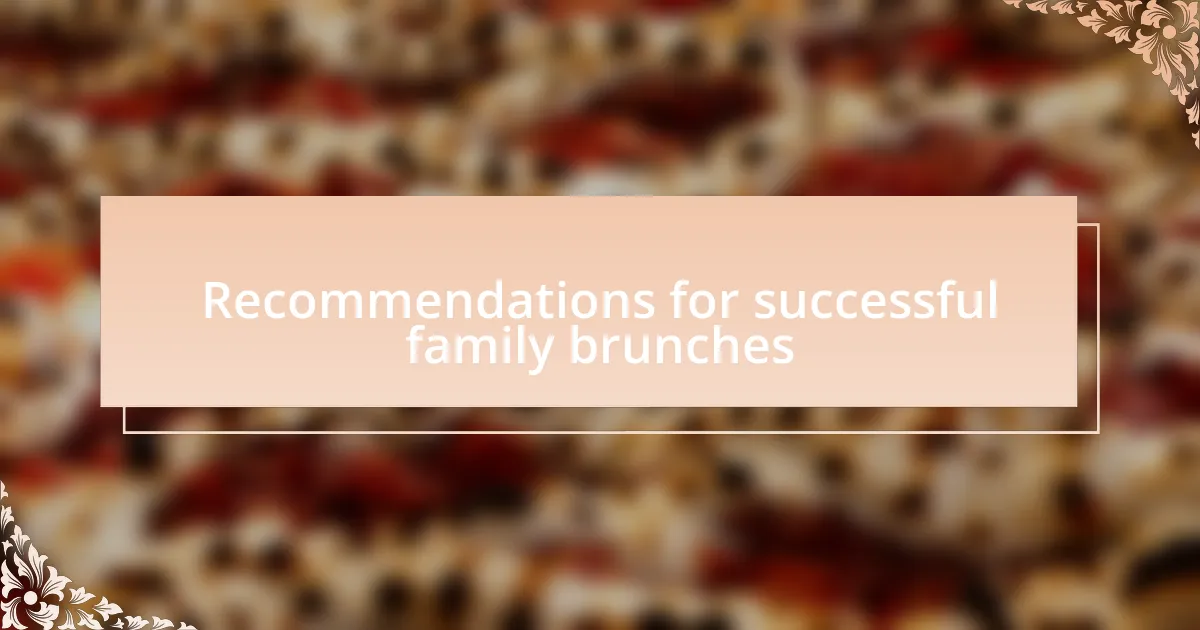
Recommendations for successful family brunches
When planning a family brunch, I’ve found that involving everyone in the preparations can enhance the experience significantly. Last holiday, we let each family member choose a dish to bring—this not only spread out the workload but also sparked excitement as we shared the stories behind our chosen recipes. Have you ever noticed how food can be a gateway to sharing personal history? It definitely adds a layer of connection that enriches the gathering.
Another effective recommendation is to establish a brunch routine, such as setting a consistent time every month for family gatherings. During one such monthly brunch, we turned our phones off and agreed to share one highlight and one challenge from our week. I was surprised at how this simple practice deepened our conversations, ultimately fostering a sense of trust and understanding. Don’t you think having such rituals helps in strengthening family bonds over time?
Lastly, I advocate for keeping the ambiance light and fun. One of my fondest brunch memories is from a picnic-style gathering where we all sat on the grass, complete with checkered blankets and all kinds of finger foods. The informal setting encouraged playful banter, laughter, and even some impromptu games. Isn’t it amazing how a relaxed atmosphere can liberate our conversations and allow family members to express themselves more freely?